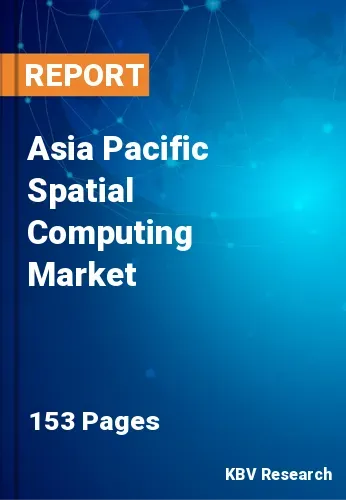The Asia Pacific Spatial Computing Market would witness market growth of 21.3% CAGR during the forecast period (2023-2030).
Businesses use Spatial Computing technologies for various purposes, including data visualization and training simulations. It enables employees to interact with data in three-dimensional space, enhancing decision-making and productivity. Industrial industries like manufacturing, architecture, and healthcare use this technology to improve safety, decrease errors, and streamline procedures.
With the help of technology, augmented, virtual, and mixed reality are altering how people interact with digital information and the real world. This technology allows users to combine the digital and physical worlds seamlessly, augmenting human-computer interaction and enabling immersive experiences. The basis of technology is immersive experiences, which allow people to engage with digital information more naturally and intuitively while creating a sense of presence and immersion. It explores virtual environments, interacting with virtual objects and visualizing data in three-dimensional space; it offers a level of immersion unparalleled by traditional computing interfaces.
APAC countries, particularly China, have been key players in manufacturing spatial computing hardware components, such as display panels, sensors, and semiconductor chips. Enhancements in manufacturing processes and supply chain efficiency have the potential to drive down production costs and improve hardware availability. APAC companies have also contributed to advancements in tracking and sensing technologies, including camera sensors, depth sensors, and lidar. These improvements led to more accurate and responsive tracking systems in spatial computing devices. These technologies help increase the efficiency, reliability, and sustainability of energy production and distribution, contributing to expanding the market in the region.
The China market dominated the Asia Pacific Spatial Computing Market by Country in 2022, and would continue to be a dominant market till 2030; thereby, achieving a market value of $34,448.1 million by 2030. The Japan market is registering a CAGR of 20.5% during (2023 - 2030). Additionally, The India market would experience a CAGR of 22.1% during (2023 - 2030).
Based on End User, the market is segmented into Healthcare, Aerospace & Defense, Automotive, Energy & Utilities, Gaming, Consumer Electronics, Architecture, Engineering, and Construction (AEC), Government and Public Sector, Information Technology, Education, and Others. Based on Solution, the market is segmented into Hardware, Software, and Services. Based on Technology, the market is segmented into Augmented Reality, Virtual Reality, Mixed Reality, Artificial Intelligence. Internet of Things (IoT), Digital Twins, and Others. Based on countries, the market is segmented into China, Japan, India, South Korea, Singapore, Malaysia, and Rest of Asia Pacific.
Free Valuable Insights: The Global Spatial Computing Market is Predict to reach $423.5 Billion by 2030, at a CAGR of 20.3%
The market research report covers the analysis of key stakeholders of the market. Key companies profiled in the report include Apple Inc., Avegant Corporation, Blippar Group Limited, Seiko Epson Corporation, Google LLC, HTC Corporation, Lenovo Group Limited, Magic Leap, Inc., Microsoft Corporation, NVIDIA Corporation.
By End User
By Solution
By Technology
By Country

Our team of dedicated experts can provide you with attractive expansion opportunities for your business.

